West Pomeranian Voivodeship/ Graves of young women and children in a 4,000-year-old cemetery

Archaeologists from the University of Szczecin in Nowe Objezierze have discovered further graves dating back 4,000 years, likely including the burials of young women and children. The grave forms and furnishings, as well as the arrangement of the remains in the fetal position, are typical of the Únětice culture of the Early Bronze Age.
Scientists discovered an early Bronze Age cemetery during research in 2020. Since then, they have discovered 16 graves there, but nine of them, including two children's burials, during the season that has just ended.

The research was led by Dr. Agnieszka Matuszewska from the Department of Archaeology at the University of Szczecin, and the expedition included specialists from the National Museum in Szczecin, archaeologists from the Tricity area, Dr. Iwona Teul, MD, PhD, from the Pomeranian Medical University, and archaeology students.
"These newly discovered graves are much better preserved. We found entire skeletons, skulls, sometimes with full dentition, which is very important in the context of our further analyses, which we plan to conduct," Dr. Agnieszka Matuszewska emphasized in an interview with PAP.
The dead were buried in small pits, often surrounded by stones. The remains discovered in Nowe Objezierze were found in a fetal position. Bodies were placed on a north-south axis, with the head facing south and the face east. In many cases, the hands of the deceased were placed near their mouths, which may symbolically refer to the image of a newborn child.
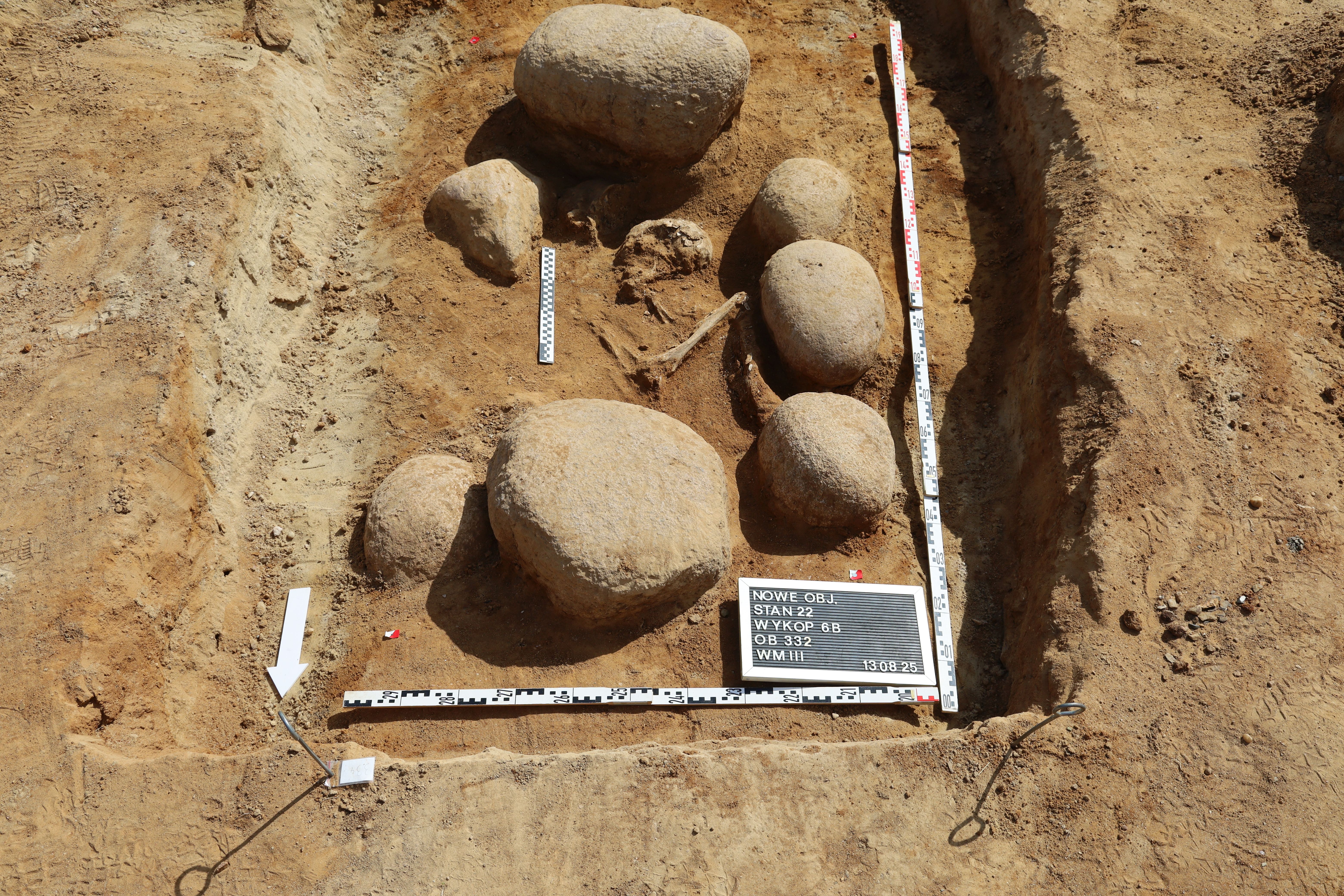
- Their lower limbs were bent, very tightly pressed against the chest, so it seems that they could have been tied before being placed in the grave - described the head of the research.
This type of burial is characteristic of the so-called Únetice culture – one of the oldest Bronze Age societies in Central Europe, developing in the territories of present-day Czech Republic, Slovakia, Germany, and Poland. These were among the first groups to function in the realities of a new era in what is now Poland, with the emergence of metal, new forms of social organization, and distinctive funeral practices.
Preliminary radiocarbon dating of the first remains discovered at the site, carried out in 2020, indicates that the cemetery functioned between 2000 and 1700 BC. The new discoveries open the way to further DNA analyses, radiocarbon studies and detailed studies of the diet and mobility of ancient communities.
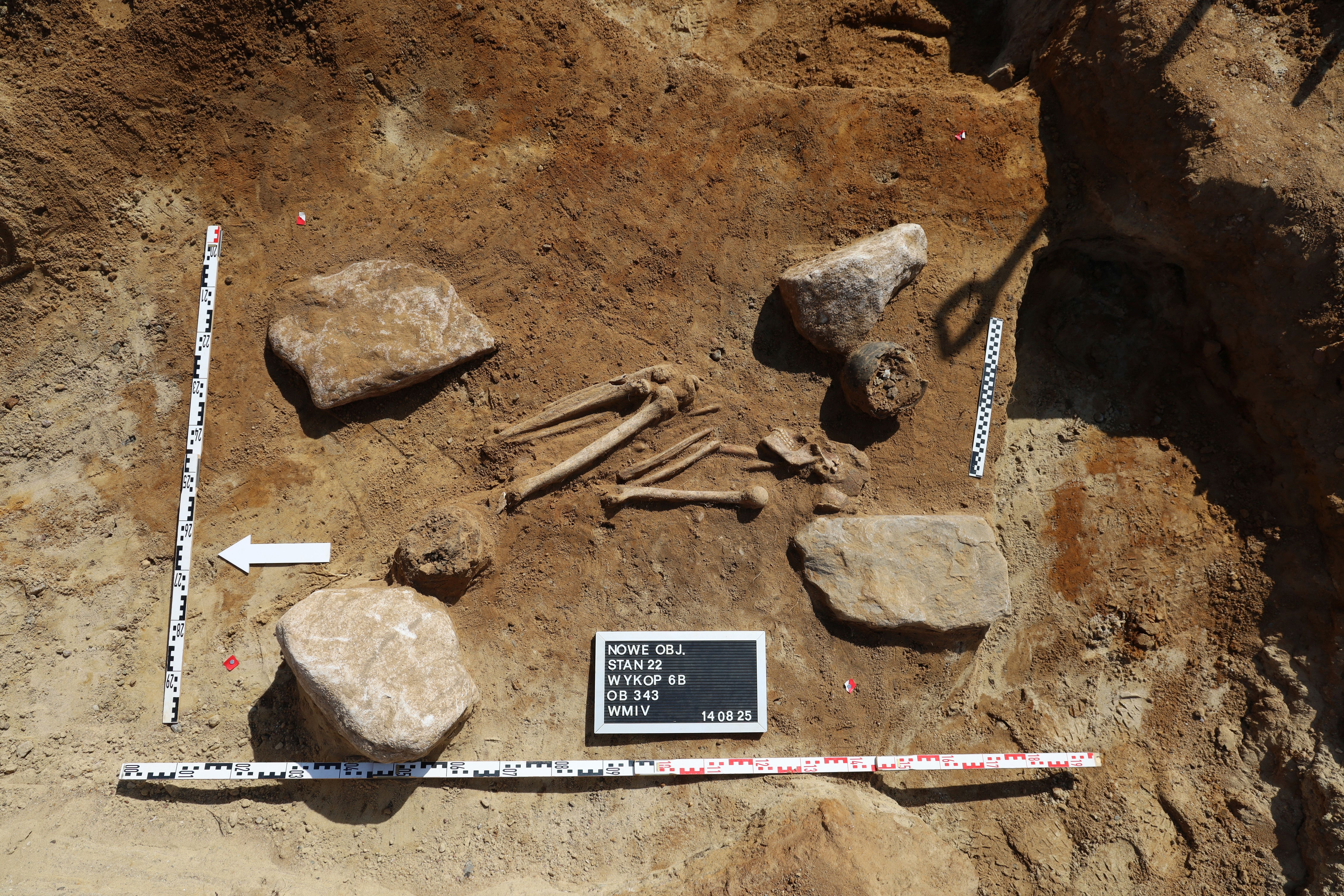
Among this year's discoveries, the grave of an adult male stands out, surrounded by large boulders and with an unusual—non-anatomical—arrangement of the remains. The lower half of the body appears to have been crushed. This may indicate an accident or unusual circumstances of death. Detailed anthropological research will provide more information about its history.
The researchers' attention was also drawn to the burials of two young women: one of the deceased was buried with a lump of amber by her mouth, while the other had a bronze necklace and temple ornament around her neck – some of the oldest evidence of the use of this metal in Pomerania.
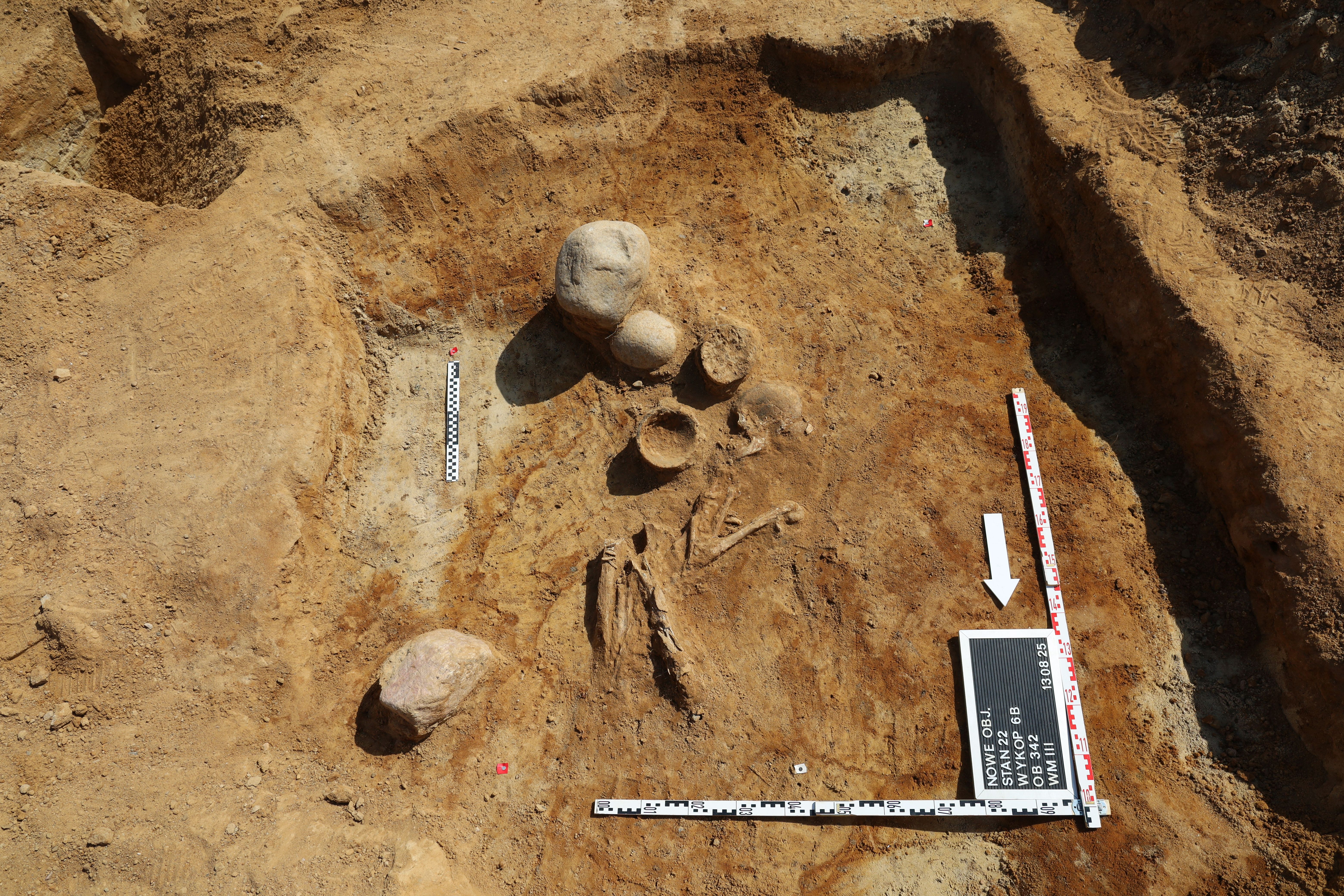
"Amber is certainly present in the Early Bronze Age, but it's not very common. The large lump of amber found in the grave was a surprise to us. The amber will be subjected to further specialized analysis," the researcher explained.
The archaeologist emphasizes that research into this cemetery is important for understanding the Early Bronze Age in this region of Europe, one of the least understood periods in the history of Pomerania. "We don't actually know much about the settlements of the Únetice culture here in our region. This is only the third cemetery from this period recorded by excavations in the region since 1945, but the first so rich and well-preserved. Previous sites have not been studied on such a scale, and of course, they were not examined using modern methods," noted Dr. Matuszewska.
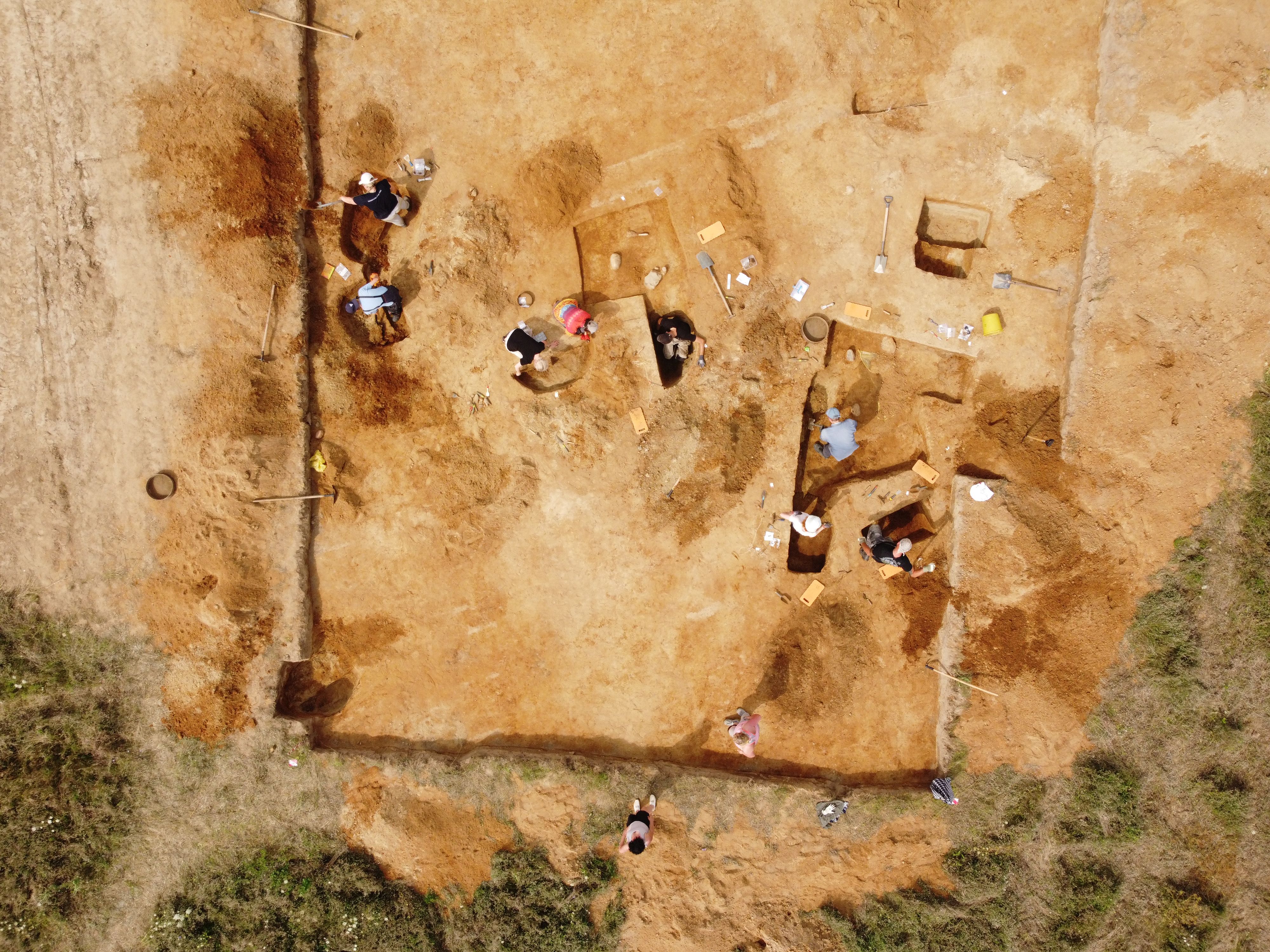
In her opinion, the discovery of more graves, and indeed more cemeteries in the immediate vicinity, is only a matter of time. These areas, rich in good-quality soil, attracted early settlers, who intensively developed agriculture and livestock farming.
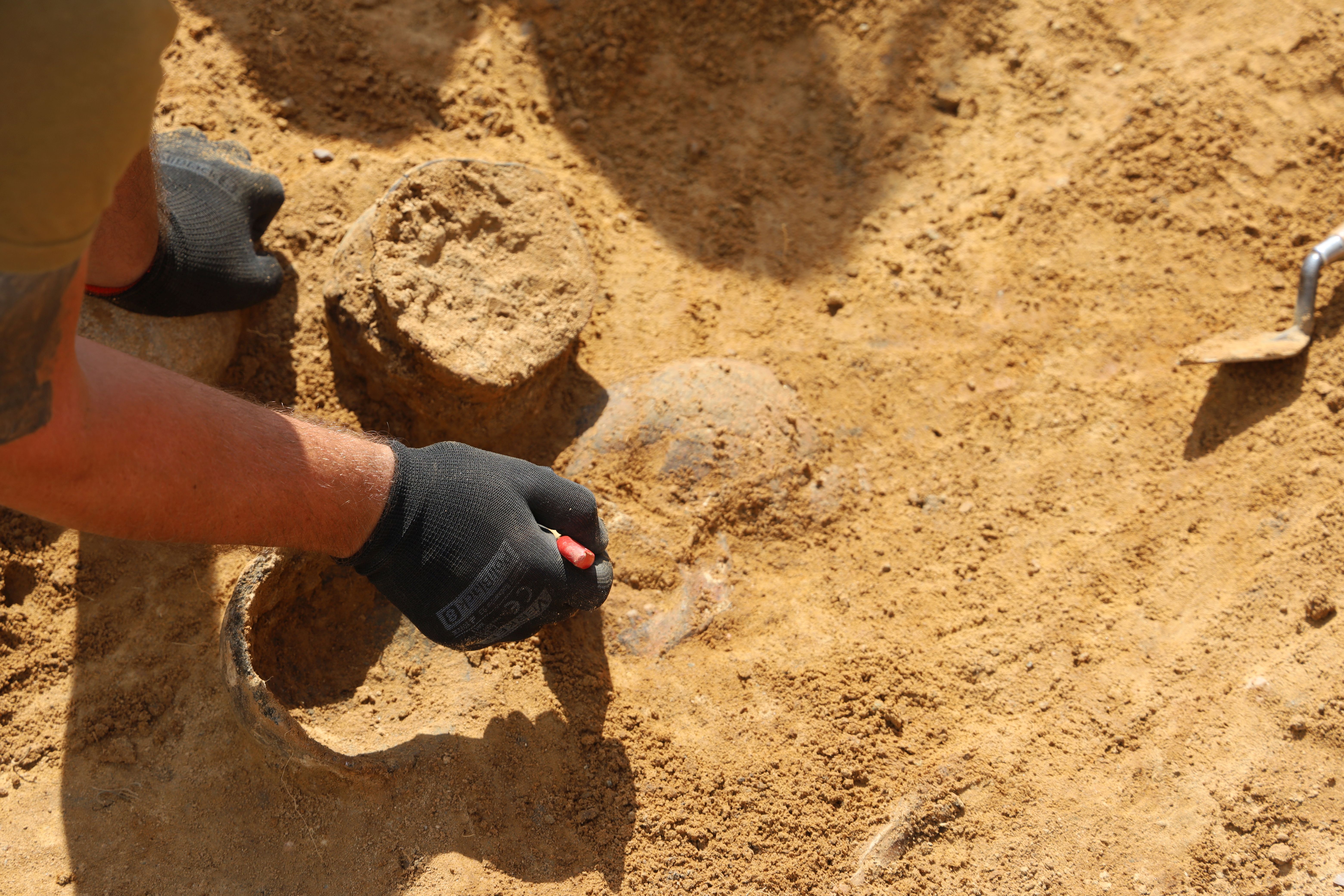
"I'm almost certain there's a settlement here that owned a cemetery. Its discovery would be important because we know these Early Bronze Age cultures primarily through the prism of burial rites, not everyday life. Researching such settlements would be groundbreaking for the entire region," she explained.
Science in Poland, Ewelina Krajczyńska-Wujec (PAP)
ekr/ bar/ amac/
The PAP Foundation permits free reprinting of articles from the Nauka w Polsce website, provided that you notify us by email once a month of your use of the website and cite the source of the article. On portals and websites, please include the linked address: Source: naukawpolsce.pl, and in journals, please include the annotation: Source: Nauka w Polsce website - naukawpolsce.pl. This permission does not apply to information in the "World" category or any photographs or video materials.
naukawpolsce.pl





